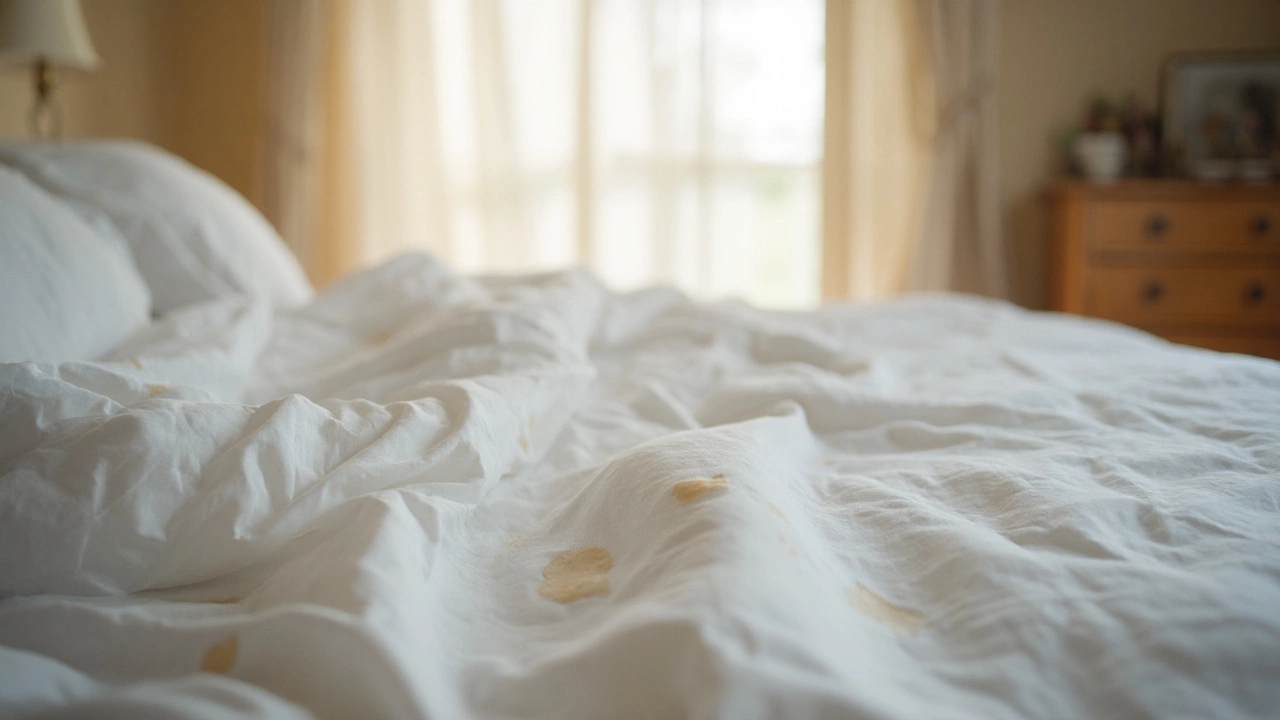Sperm Stain Color Guide: Spot & Remove Stains Fast
Seeing a spot on your sheet or sofa and wondering if it’s sperm? The color can tell you a lot about how fresh it is and what cleaning method works best. Fresh stains are usually clear or slightly yellow, while older ones turn brown or even greenish as they oxidise. Knowing the shade helps you pick the right product, so you don’t waste time or damage the fabric.
First thing to do is act quickly. The longer you wait, the deeper the proteins set into the fibres and the tougher the stain becomes. If you catch it while it’s still wet, a simple blot with cold water can lift most of it. Never rub – that just spreads the stain and pushes it deeper.
Why Sperm Stains Change Color
Sperm contains proteins, enzymes and a tiny amount of blood. When it meets air, the iron in the blood oxidises, turning the stain from a pale yellow to a darker brown. If you leave it in a warm, damp environment, bacteria start to break down the proteins, which can produce a greenish hue. This colour shift is a good indicator that the stain is aging and will need stronger cleaning agents.
Understanding the colour also helps you avoid common mistakes. For example, using hot water on a fresh, clear stain can cause the proteins to coagulate, making the spot harder to remove. Cold water keeps the proteins loose, giving you a better chance to rinse them out.
Step‑by‑Step Removal Guide
1. Blot with cold water – Lay a clean towel under the stained area, then press a damp cloth onto the spot. Keep pressing until no more fluid lifts.
2. Apply an enzymatic cleaner – Enzyme‑based cleaners break down protein stains. Spray a small amount, let it sit for 5‑10 minutes, then blot again. This works well on cotton, linen and most upholstery.
3. Use a mild detergent mix – Mix a teaspoon of liquid dish soap (like Dawn) with a cup of cold water. Dab the solution on the stain, gently work it in with a soft brush, and rinse with cold water.
4. For older, brown or green stains, try hydrogen peroxide – Test on an inconspicuous spot first. If safe, apply a 3% hydrogen peroxide solution, let it fizz for a minute, then blot and rinse. It lifts oxidised pigments without harsh chemicals.
5. Finish with a vinegar rinse – Mix one part white vinegar with two parts water, spray lightly, and blot. Vinegar neutralises any remaining odor and helps keep the fabric soft.
After the stain is gone, let the item air‑dry completely. If the fabric is still damp, a hair dryer on cool setting can speed up drying and prevent mildew.
Remember, the key is to match the cleaning method to the stain’s colour and age. Fresh clear spots need only cold water and enzyme cleaners. Darker, older spots may require peroxide or a stronger detergent. With these simple steps, you can tackle sperm stains without calling in a pro and keep your sheets, carpets and sofas looking fresh.

Sperm Stain Color: What It Looks Like and Tips for Cleaning
Discover what color sperm stains are, how they change, and effective ways to remove semen stains from bedding, clothing, and upholstery. Science meets practical advice.
Read More